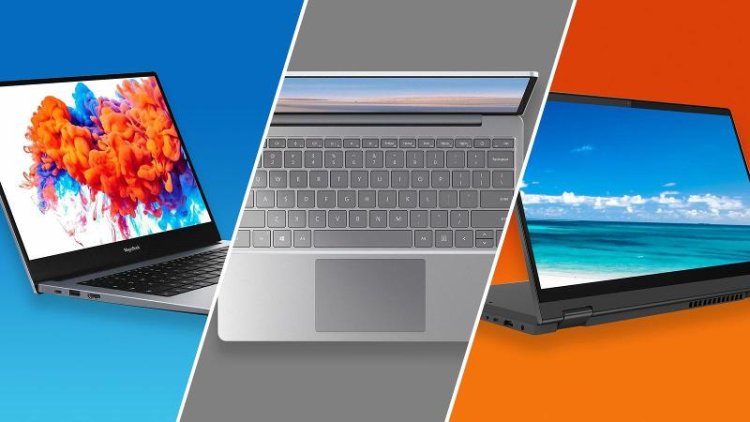Best Laptops Under 300 $
The best laptops under $300 that we arranged for you are nice forms for individuals who are more into the fundamental stuff like making records in MS Excel and Word

Regardless occurs all throughout the planet, modest scratch pads like the best laptop under 300 are something that mankind would consistently require. This implies, simply take the case of anything whether it's gaming, office work, diversion, or whatever other thing that human instinct is appended to, you generally need a laptop for that particular reason. Be that as it may, today, we're profoundly centered around spending plan laptops and all the more explicitly the best cheap gaming laptops under 500.
The best laptops under $300 that we arranged for you are nice forms for individuals who are more into the fundamental stuff like making records in MS Excel and Word. These are only two of the models, these workstations permit you to do numerous things.
Truth be told, numerous entrepreneurs have them and are bound to be happy with these $300 laptops however many individuals acclaim somewhat costly workstations. Be that as it may, everything relies upon the motivation behind the laptop. In case you're utilizing these laptops only for the lighter errand, great, the game is your hand. Though, the best laptop under 300 isn't suggested for substantial projects like the android studio and Adobe Photoshop.
Asus VivoBook S14
Asus VivoBook S14 (S412UA)
- Very good value for money
- Very thin NanoEdge borders
- Original and practical NumPad keypad
Editorial Review
Despite a screen that we will quickly blame for its lack of brightness, and a much shorter autonomy than on Acer's Swift 1, the Asus VivoBook S14 offers an excellent equipment / price ratio, with the added bonus of a neat chassis and generous connectivity. For just 300 $ (and sometimes less with the regular current sales on this model), the experience delivered does not have much to envy that allowed by models launched at 200 or 300 $ or more.
A little better equipped than the Acer Swift 1, which we discussed above, the ASUS VivoBook S14 has the merit of bringing a slightly more muscular and latest generation processor that could prove useful if you want to have a little extra power to get you going. The price therefore increases to around 300 $. The model we have chosen for this selection is trading at 499 $ on the net.
For this price, Asus delivers us a very suitable device, which does not suffer from any major defect for office and multimedia use. Be careful, however, we are returning to a 14-inch ultraportable format, which may not be suitable for all users. This diagonal is the same as that of the Swift 1 ... and you will see that the two devices share a number of peculiarities, especially in terms of configuration.
A very Decent Setup for the Price
The VivoBook S14 (S413FA) includes, in its most recent and affordable version, a Core i3-1035G1. This is one of the smallest chips in the Intel “Comet Lake-U” lineup, launched last year and still very popular on laptops. This processor has 2 cores and 4 threads clocked between 1.20 and 3.40 GHz and is often found on board entry-level ultraportables. The choice of Asus is therefore not a surprise, but it is a fairly good decision for a use marked above all by word processing, long Excel sessions, surfing the net, and video playback.
Do not expect, on the other hand, to indulge in video editing, photo editing or even more demanding tasks:
Note, however, that the model we have chosen has 8 GB of RAM (DDR4 2400 MHz). A good point, even if the 4 GB offered on the more affordable versions of the device are still sufficient in 2020 for light activities. On the storage side, we finally find a 256 GB SSD (in M.2 format, so it will be possible to replace it if necessary) coupled with 16 GB of Intel Optane memory, capable of giving transfers a little extra boost. . A good surprise there too.
A Full HD Screen that May Make you Squint
For the rest, the VivoBook S14 has a Full HD IPS screen whose brightness is unfortunately limited to 200 nits maximum. It is little, too little. This is one of the main drawbacks of the product, as is its shorter battery life than that of Acer's Swift 1, or HP's Chromebook 15. Allow between 6 and 8 hours on battery depending on your use (the battery is indeed content with a capacity of 42 Wh). So it will be a bit tight to last a whole day without taking out the charger.
In the same vein, Wifi 6 is available, but only as an option on certain variants. We will therefore have to be content with Wifi 5 on the model we are considering here. Connectivity remains rather generous, with 2 USB 2.0 ports, 1 USB-A 3.1 Gen 1 port, 1 USB-C 3.1 Gen 1 port, 1 SD card reader, 1 full-size HDMI output and 1 headphone jack 3 , 5 mm.
Asus also has the good taste to offer us it's now famous NumPad, which allows, as a reminder, to transform the trackpad into a numeric keypad (practical for giving use to the trackpad when a mouse is connected to USB), and to install a chiclet keyboard backlit. The set is therefore very suitable for a machine whose dimensions are reduced to 324.9 x 215 x 19.1 mm, and the weight limited to 1.45 kg.
Microsoft Surface Go 2
Microsoft Surface Go 2
- Windows 10 and its millions of available software
- Excellent finishes
- A great autonomy
Editorial Review
With the Surface Go 2, it's all about compromise. Microsoft's entry-level tablet sacrifices its technical sheet by offering a low-performance processor and a limited amount of storage to give priority to its concept: a small 10.5-inch tablet that is easy to carry, capable of a sturdy battery life and equipped with 'a very nice screen to showcase all your content. The sacrifices of the purely technical part, which inevitably have an impact on the performance of the device, are offset on this Surface Go 2 by a quality of assembly and design worthy of other machines in the Surface line. Too bad the connection is on the other hand reduced to its simplest expression.
With its Surface Go 2, Microsoft is slightly improving a recipe developed two years ago. At the end of 2018, the Redmond giant indeed offered us a little sister of the Surface Pro, with smaller measurements and a lighter technical sheet. The idea? Take up the concept of a convertible tablet, but at a much more affordable price: less than 300 $. Two years later, the Surface Go therefore returns with a new version, barely overhauled but enough to once again integrate our selections.
We must confess it now, if the Surface Go 2 is trading at 459 $ in its most affordable version, the new entry-level tablet from Microsoft is once again delivered without its “Type Cover” keyboard. The latter, essential for using the tablet as an ultra-compact laptop laptop, is available from 80 $ at some resellers, but is displayed from 129.99 $ on the Microsoft online store. With this accessory, we therefore exceed by a few tens of $ at least our initial budget of 300 $. But you will see that the thing is justified if you want to bet on ultra portability, without having to choose between laptop and tablet.
A Minimalist Technical Sheet
On its Store, Microsoft offers its Surface Go 2 for 459 $. What configuration can we expect for this price? Well the bare essentials to launch office automation applications, surf the net in good conditions, and skim the Netflix catalog until you are thirsty in these troubled times of the global health crisis. Clearly, you have to be satisfied with a small Intel Pentium Gold 4425Y processor and its 2 cores / 4 threads clocked between 1.70 and 2.00 GHz. Far from being a power monster, this CPU does a good job on the basic activities mentioned above and will have the merit of being energy efficient.
At its side, there is 4 GB of RAM and 64 GB of storage space. It is not much, of course, but sufficient on a device that will be used at least half the time as a tablet. The Surface Go 2 is also not intended to store many heavy documents. The concept is not there, it focuses more on streaming, the cloud and the occasional storage of office documents for the most part.
In terms of connectivity, we can count on Wifi 6, while the connectivity remains minimalist because it is restricted to 1 USB-C port, 1 micro-SD card reader and 1 jack 3.5. Here again, the bare essentials, nothing else. However, we regret the absence of a USB-A port, but this is partly justified by the very small dimensions of the device, which does not exceed 245 x 175 x 8.3 mm. We are above all on a (small) tablet, let's not forget!
The Tablet that Wants you to Travel (and Work) Light ...
But the great advantage of the Surface Go 2 is undoubtedly its screen. Microsoft's entry-level tablet is indeed adorned with a high-end 1080p IPS panel, bright and capable of great colorimetric reproduction. On this side, we feel that the Redmond firm wanted to offer users an experience very close, in terms of rendering, to that found on a Surface Pro ... but smaller. Because yes, the Surface Go 2 screen is restricted to a diagonal of 10.5 inches. It's small, and that's fine, since the device is very easy to carry and slip into a bag. The advantage is also to take advantage of a good pixel density, calculated at 220 pixels per inch. You will therefore not see any pixels while broadcasting your content.
Microsoft also wanted to deliver a light chassis (the tablet, excluding the keyboard, weighs only 553 grams) and perfectly assembled. From this angle, the Surface Go benefits from the same build quality as the other devices in the Surface range. It is therefore a product with a high-end feeling that we have in our hands, which is naturally a great asset of the device. Finally, the autonomy of the set is around 10 hours, which will allow you to spend a whole day working on the Surface Go 2 without having to bother with any charger. One more positive point. Recharging, for its part, is on the other hand quite slow: count around 2h30 on the mains to find a fully charged battery.


















































